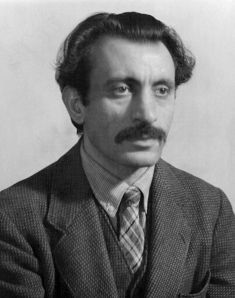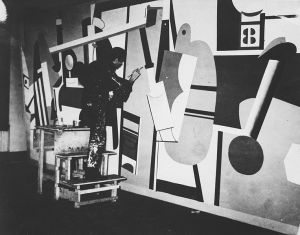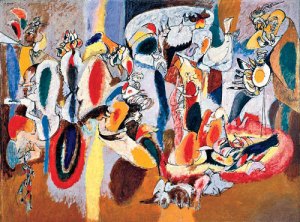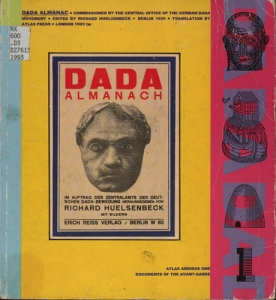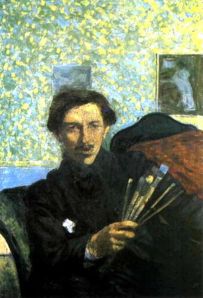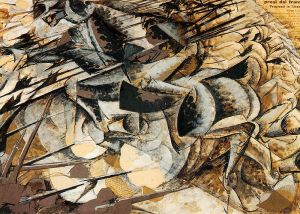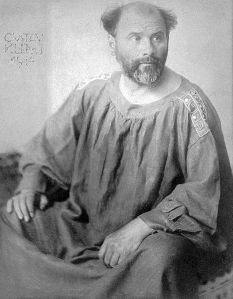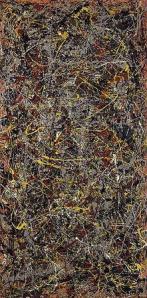The Rise of the New York School, following World War II, coincides with the emergence of the Cold War. A window of time was developing out of the context of fear where artists secluded themselves in their studios in Greenwich Village and individually sought the refuge of abstraction. These avant-garde artists recognized that the intersections of lines and non-objective forms had the potential to create powerful visual effects. Jackson Pollock took this realization to a new level of significance with his drip paintings of the late 1940s to mid 1950s. Pollock seemed to intuitively understand Wassily Kandinsky’s abstractions. The famed Russian painter stated, in Cahiers d’art, 1932, the following: “A round spot in a painting can be more significant than a human figure…The impact of the acute angle of a triangle on a circle produces an effect no less powerful than the finger of God touching the finger of Adam in Michelangelo.” What are your thoughts, within the frame offered by Kandinsky, on Pollock’s unique way of approaching the canvas as a choreography of movements “dancing” above the canvas surface?

